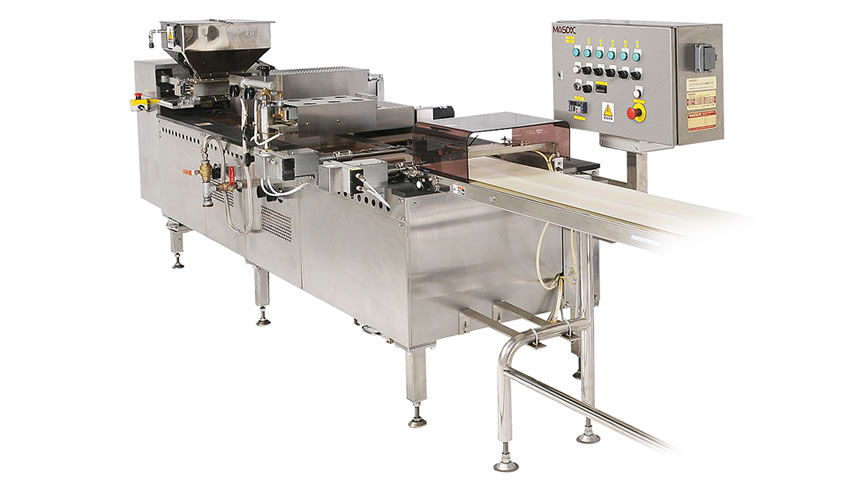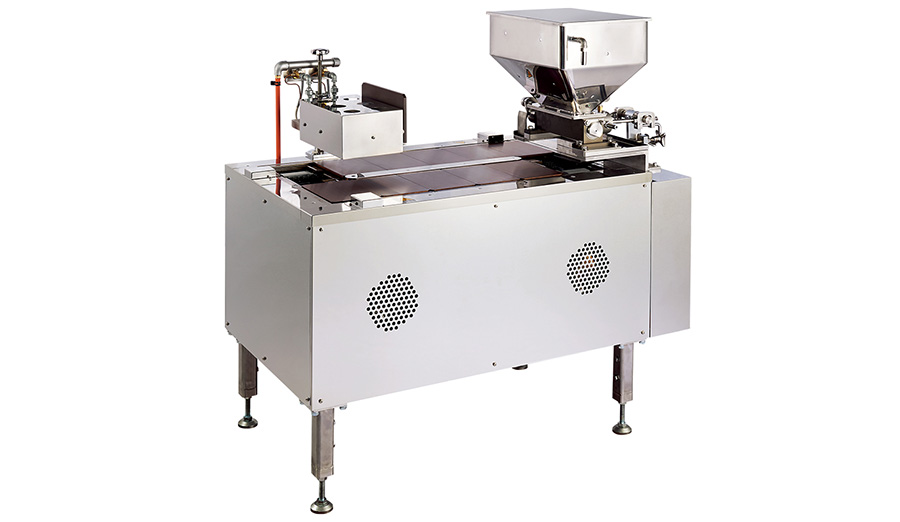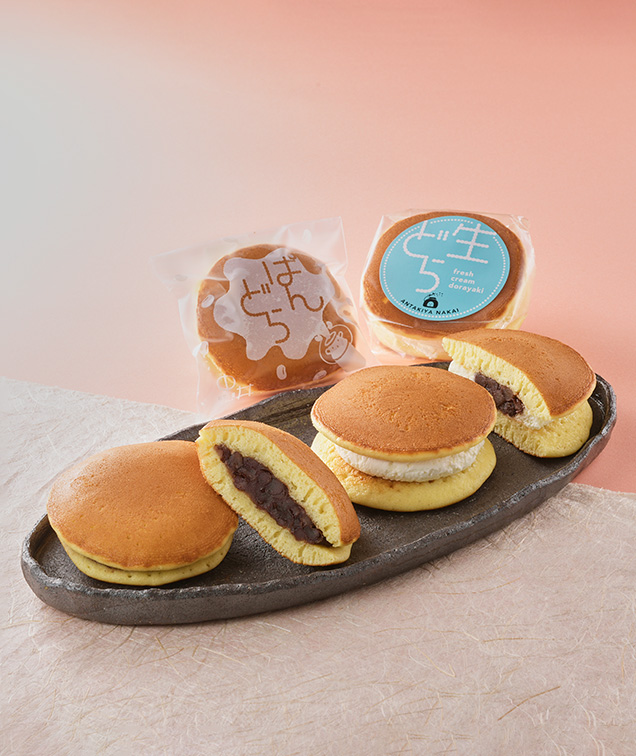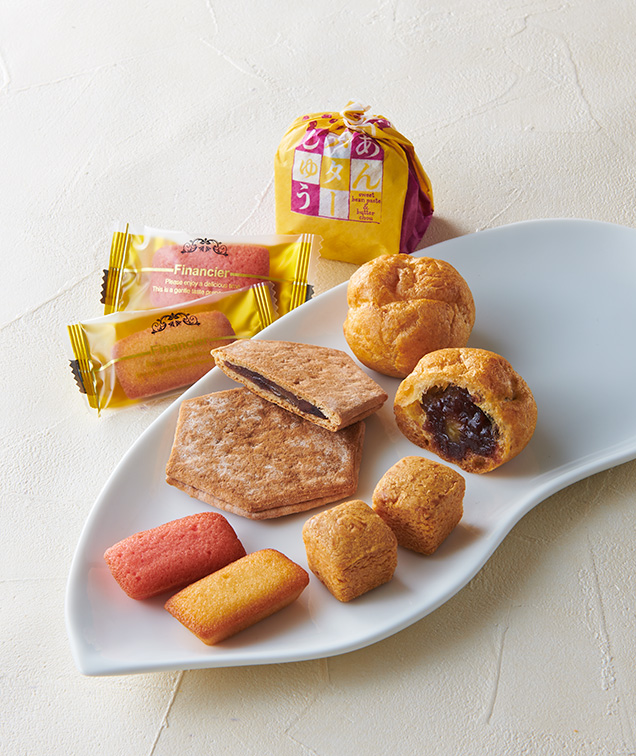Case Study

- Dorayaki Machine
- Ayuyaki・Anmaki
G.K. Tamaiya Honpo
Tamaiya Honpo, founded in 1908, is a long-standing store that has been operating for 116 years at a picturesque site in scenic Gifu City. It is said to be the origin of Gifu's famous ayu-gashi (sweets shaped like sweetfish). It is located approximately 450 m from the station for the cormorant fishing tourist boat at the approach to Nagara Bridge in Kawara-machi, an area with elegant streetscapes of rows of traditional townhouses.
Third-generation president Tamai Hiroko launched the Kawaramachi Town Development Association in 2001, and as secretary-general, she has striven to promote renovations that are conscious of the scenery and to foment community culture, with the goal of "a livable, comfortable town with a feeling of history and culture."
Upon the 100th anniversary of its founding in 2008, Tamaiya Honpo renewed its traditional townhouse. In the renovation, they made the most of the latticed doors and traditionally deep townhouse structure while displaying tools and other items, like boxes for confectionery dedicated to previous emperors and confectionery ledgers. A site tour route was also installed in the factory. In this way, the store's manufacture of Japanese confectionery has maintained its connection to tradition while breathing new life into it.
The ayu-gashi "Nobori-ayu" was invented by Tamaiya Keitarō, grandfather of the first president, who was proud of the sweet that he spread around lavishly as a famous Gifu item.
In 2019, Tamaiya Honpo released the "Gekokujō Ayu," a sweet based on the "Yaki-ayu" dry confectionery conceived by the first president that represents the form of a sweetfish that is about to be caught by cormorant fishing but exacts its revenge on the cormorant instead. To get younger generations to become aware of Japanese confectionery again, the development was assigned to the eldest son of the president's nephew, who was working in a position related to video games. The sweet's uniqueness made it a topic of discussion and it was awarded the Japan Package Design Awards for 2021.
Using tradition as a foundation while also incorporating the air of the current era little by little is how "tradition" should be, and we hope to continue valuing playfulness while we keep making confectionery with care, sincerity, and a constant focus on our customers.
Location:42 Minatomachi, Gifu City, Gifu Prefecture
URL:https://tamaiya-honpo.co/
Publication:MASDAC news May issue in 2024
Direct baking machine (SDR)
Tamaiya Honpo introduced the first generation of direct baking machines in 1983 and mechanized the baking of Gifu's famous Nobori-ayu. The objective was to handle the growth in demand for gifts at the time. It was also to reduce the work burden on employees, who had previously made them continuously all day by hand. The store later updated to models of the same type in 2005 and 2024. Mechanization allowed the store to keep selling through department stores, train stations, and other outlets for many years, in addition to the main store. In addition, Tamaiya Honpo has striven to ensure stable quality and secured strong trust from its customers through regular renewals. Although the production volume varies depending on the season, the store produces 1,000 to 8,000 Nobori-ayu each day. After producing the regular Nobori-ayu, the batter is left as it is but the size of the coating is changed to produce the smaller matcha Nobori-ayu as well. Next, Tamaiya Honpo aims to create an environment where it is easy for women and older people to work.
-
 Nobori-ayu filled with the regular gyūhi (a Turkish delight-like confection), and the smaller Nobori-ayu (matcha) filled with matcha-flavored gyūhi
Nobori-ayu filled with the regular gyūhi (a Turkish delight-like confection), and the smaller Nobori-ayu (matcha) filled with matcha-flavored gyūhiNobori-ayu filled with the regular gyūhi (a Turkish delight-like confection), and the smaller Nobori-ayu (matcha) filled with matcha-flavored gyūhi
-
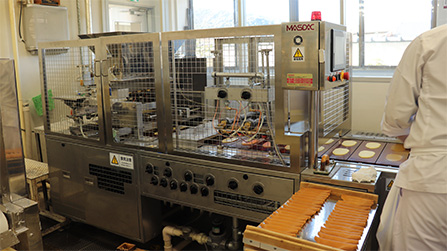 Producing Nobori-ayu. The pathway at the rear is the tour route, which allows visitors to see Nobori-ayu being made.
Producing Nobori-ayu. The pathway at the rear is the tour route, which allows visitors to see Nobori-ayu being made.Producing Nobori-ayu. The pathway at the rear is the tour route, which allows visitors to see Nobori-ayu being made.
Gyūhi is placed on a coating of baked sponge cake and then formed into shape. We have provided a space for forming them after they are taken out. -
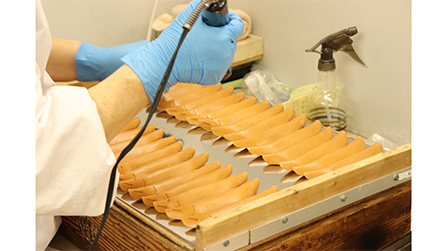 Representing the sweetfish's face with a brand
Representing the sweetfish's face with a brandRepresenting the sweetfish's face with a brand
Reference
MASDAC NEWS trial version
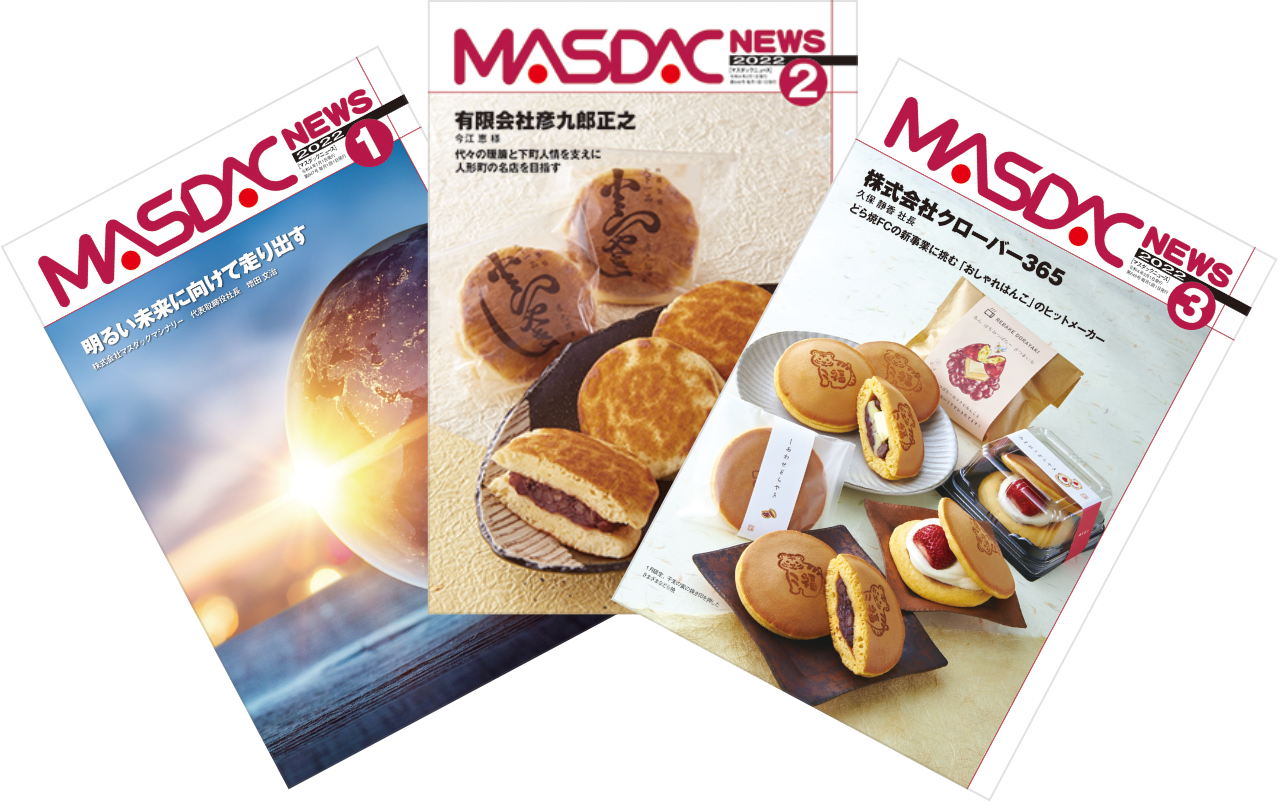
Case studies are published in our PR magazine MASDAC NEWS delivered to users. In the magazine, we present various information related to sweets and food manufacturing, including an interview with our customers’ top management. Here, you can check out the trial version of the magazine. For periodical delivery of the MASDAC NEWS in a printed format, please send us a request via the following request form.
View the Trial Version (PDF)

